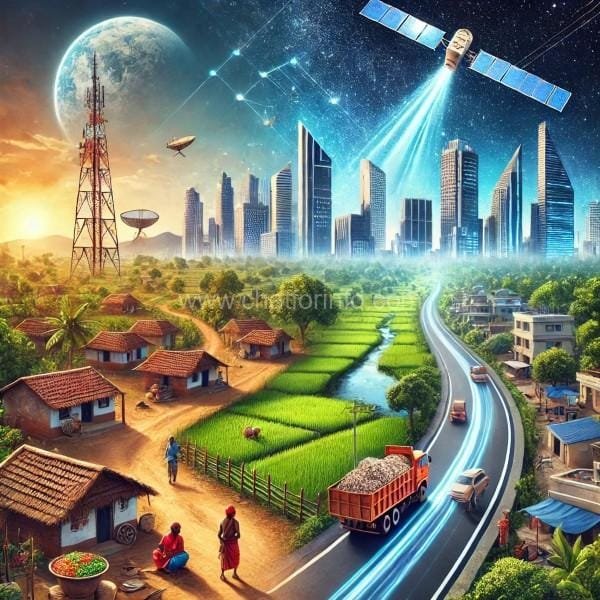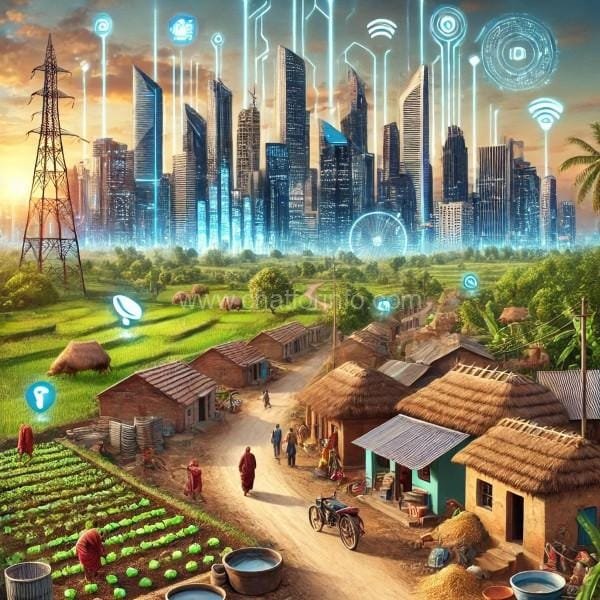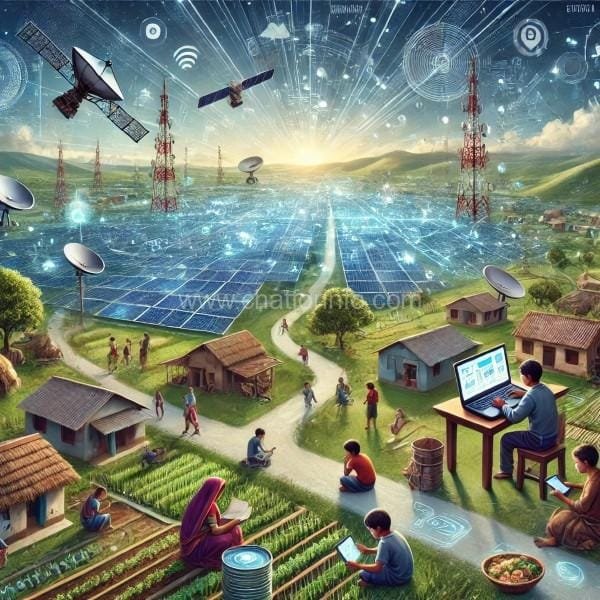
What is Starlink?
Starlink is a satellite-based internet service developed by SpaceX, founded by Elon Musk. It aims to provide high-speed internet access to remote and underserved areas worldwide by using a constellation of low-earth orbit (LEO) satellites. Elon Musk Starlink Internet in India is set to revolutionize connectivity, especially in rural and remote areas where traditional broadband infrastructure is lacking.
How Does Starlink Work?
Unlike traditional broadband, which relies on underground fiber optics or mobile towers, Starlink uses a network of satellites to beam internet connectivity directly to users’ Starlink terminals (dish antennas). These terminals communicate with Starlink satellites in space, which then relay signals to ground stations connected to the global internet infrastructure.
Difference Between Low Earth Orbit (LEO) and Geostationary Orbit (GEO) Satellite Networks
LEO Satellites
- Altitude: 500-2,000 km above Earth.
- Latency: Low (20-40 ms), making it suitable for gaming and video calls.
- Speed: High-speed internet with reduced lag.
- Coverage: Requires thousands of satellites for global coverage.
- Example Companies: SpaceX’s Starlink, Amazon’s Project Kuiper, OneWeb, China’s Hongyun.
GEO Satellites
- Altitude: 35,786 km above Earth.
- Latency: High (600+ ms), causing delays in real-time communications.
- Speed: Slower speeds due to high latency.
- Coverage: Single satellite covers a large area.
- Example Companies: HughesNet, Viasat, Dish Network.
Which is Better? LEO satellites are superior for high-speed internet and low latency, making them ideal for real-time applications like gaming, video conferencing, and financial transactions. GEO satellites are more cost-effective for broadcasting services, but they suffer from high latency.

Why is This a Big Deal for India?
1. Bridging the Digital Divide
India has over 1.4 billion people, but nearly 40% of the population still lacks proper internet access, especially in rural areas where fiber-optic networks are scarce. Starlink’s satellite-based internet can bring high-speed connectivity to these remote regions.
2. Boosting the Indian Economy
- E-Commerce Growth: More people online mean a larger customer base for platforms like Amazon, Flipkart, and local startups.
- Startups & Innovation: Increased connectivity can lead to a surge in tech startups and freelancers.
- Education & Healthcare: Online learning and telemedicine services will become accessible in rural areas.
- Jobs & Employment: Millions of digital jobs can be created, integrating rural India into the global economy.
3. Strengthening India-US Trade Relations
This deal reinforces strong India-US trade ties, encouraging more foreign investments in India’s tech sector.
Elon Musk’s Investment in Indian Villages
Elon Musk has reportedly planned to provide free internet in Indian villages and rural areas as an initial boost to digitalization. This move is expected to:
- Empower rural businesses with online markets.
- Provide free educational and medical resources.
- Increase digital transactions, reducing dependency on cash-based economies.
How Starlink Benefits Elon Musk & SpaceX
- Massive New Market: India is the second-largest internet market globally.
- Revenue Growth: Starlink in India could be a multi-billion-dollar revenue stream.
- Global Expansion: Success in India may lead to expansion in other developing nations.
- Funding SpaceX Missions: Starlink revenues support SpaceX’s Mars missions and satellite launches.
Challenges & Potential Roadblocks
1. High Cost for Indian Consumers
Starlink costs $99/month (₹8,000) in the US. For Indian consumers, a price above ₹3,500/month may be unaffordable. Lower pricing strategies will be essential for widespread adoption.
2. Regulatory & Government Approval
Starlink still needs approval from India’s Department of Telecommunications (DoT) and Telecom Regulatory Authority of India (TRAI) before it can launch commercially.
3. Competition with Jio and Airtel
Jio and Airtel, Starlink’s partners, have their own broadband networks. If Starlink becomes dominant, it might compete with them in the long run.
Starlink vs Traditional Broadband: A Detailed Comparison
| Feature | Starlink (Satellite Internet) | Fiber-Optic Broadband (Traditional) |
|---|---|---|
| Technology | Uses LEO satellites with low latency (20-40ms) | Uses physical fiber-optic cables with very low latency |
| Speed | 50-250 Mbps | Up to 1 Gbps in some cities |
| Data | Unlimited on most plans | Depends on provider & plan |
| Availability | Ideal for rural and remote areas | Mostly available in urban areas |
| Reliability | Works even during natural disasters, but may face signal issues due to heavy rain or obstructions | More stable but affected by physical cable damages |
| Cost | More expensive initially due to equipment costs | Generally, more affordable |
| Advantages | Widely available in remote areas, lower latency than traditional satellites | Higher speeds, lower latency, and lower costs in urban areas |
| Disadvantages | Higher cost, signal interference issues in harsh weather | Limited availability in rural areas |
Starlink is ideal for rural areas with no fiber connectivity, while traditional broadband is the best choice in cities due to lower costs and higher speeds.

Future of Starlink in India: Predictions & Potential Success
If Starlink scales properly, here’s what to expect in the next 5-10 years:
- 100% rural internet connectivity.
- E-commerce and remote jobs boom in villages.
- Increase in foreign investments in India’s digital economy.
- Airtel and Jio may compete with Starlink instead of collaborating.
- India’s internet economy could surpass $1 trillion.
Final Thoughts: A New Digital Era for India
Elon Musk Starlink Internet in India: The Starlink-Jio-Airtel partnership marks the beginning of a new era of internet connectivity in India. While challenges exist, this collaboration has the potential to transform India’s economy, improve global trade relations, and create millions of new digital opportunities.
If pricing and regulations align, Starlink could play a key role in making India one of the world’s most digitally connected nations.
helloI really like your writing so a lot share we keep up a correspondence extra approximately your post on AOL I need an expert in this house to unravel my problem May be that is you Taking a look ahead to see you
Your ability to distill complex concepts into digestible nuggets of wisdom is truly remarkable. I always come away from your blog feeling enlightened and inspired. Keep up the phenomenal work!
Your writing has a way of resonating with me on a deep level. I appreciate the honesty and authenticity you bring to every post. Thank you for sharing your journey with us.
I just wanted to express my gratitude for the valuable insights you provide through your blog. Your expertise shines through in every word, and I’m grateful for the opportunity to learn from you.
My brother suggested I might like this website He was totally right This post actually made my day You cannt imagine just how much time I had spent for this information Thanks
helloI really like your writing so a lot share we keep up a correspondence extra approximately your post on AOL I need an expert in this house to unravel my problem May be that is you Taking a look ahead to see you
Your writing is like a breath of fresh air in the often stale world of online content. Your unique perspective and engaging style set you apart from the crowd. Thank you for sharing your talents with us.
Hello i think that i saw you visited my weblog so i came to Return the favore Im trying to find things to improve my web siteI suppose its ok to use some of your ideas
Your writing has a way of resonating with me on a deep level. I appreciate the honesty and authenticity you bring to every post. Thank you for sharing your journey with us.
Your blog is a true gem in the world of online content. I’m continually impressed by the depth of your research and the clarity of your writing. Thank you for sharing your wisdom with us.
Your blog is a shining example of excellence in content creation. I’m continually impressed by the depth of your knowledge and the clarity of your writing. Thank you for all that you do.
Magnificent beat I would like to apprentice while you amend your site how can i subscribe for a blog web site The account helped me a acceptable deal I had been a little bit acquainted of this your broadcast offered bright clear idea
Your blog is a constant source of inspiration for me. Your passion for your subject matter shines through in every post, and it’s clear that you genuinely care about making a positive impact on your readers.
Your blog is a breath of fresh air in the often stagnant world of online content. Your thoughtful analysis and insightful commentary never fail to leave a lasting impression. Thank you for sharing your wisdom with us.
Your writing is not only informative but also incredibly inspiring. You have a knack for sparking curiosity and encouraging critical thinking. Thank you for being such a positive influence!
There is evidently a bundle to realize about this. I think you made various good points in features also.
Does your website have a contact page? I’m having problems locating it but, I’d like to send you an email. I’ve got some creative ideas for your blog you might be interested in hearing. Either way, great website and I look forward to seeing it expand over time.